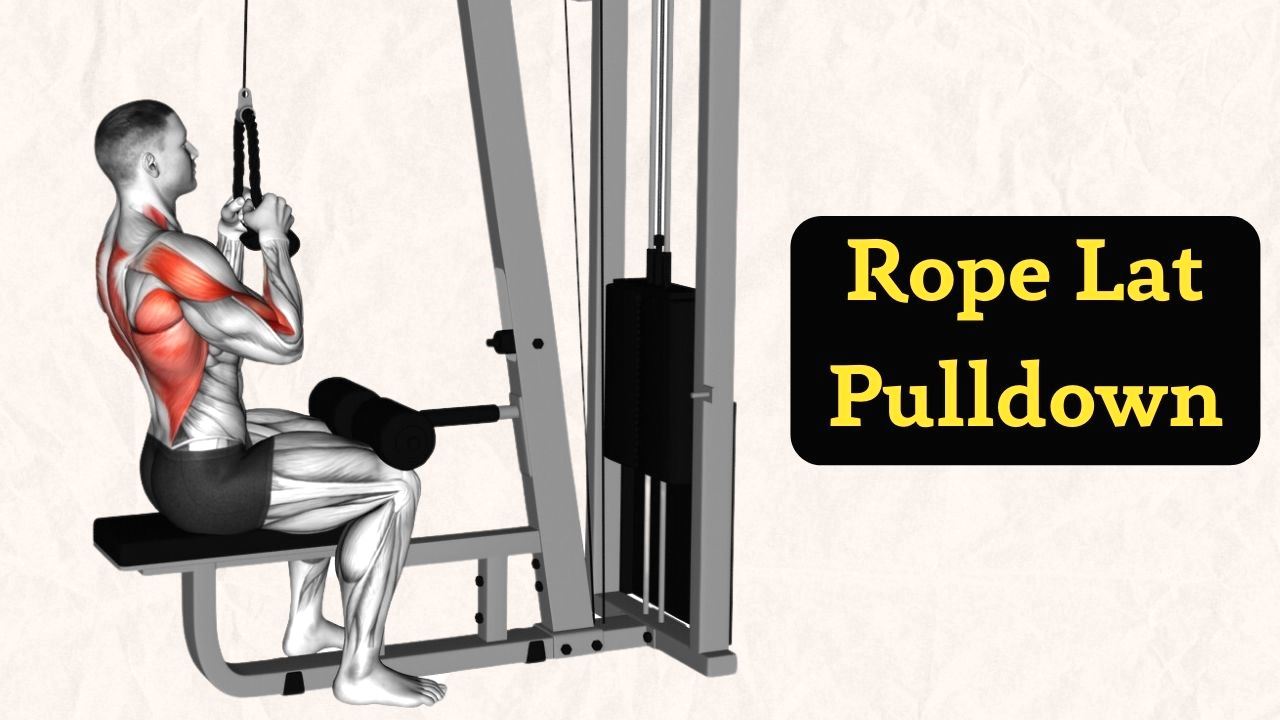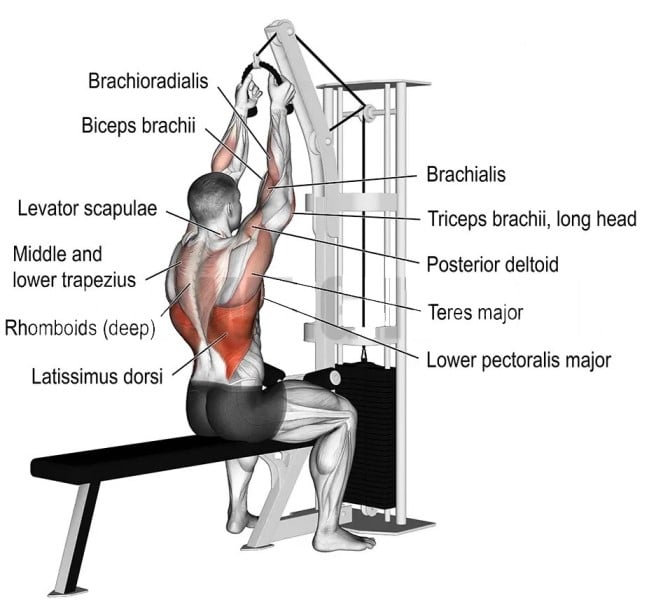The Rope Lat Pulldown is a variation of the regular lat pulldown exercise that targets your back muscles, specifically the latissimus dorsi (lats). It also targets multiple muscle groups in the upper back, as well as the arms and forearm muscles.
Unlike the lat pulldown with a wide or narrow overhand grip, the rope uses a neutral grip (palms facing each other). This can be more comfortable for some people.
Since the rope lat pulldown is less common than the standard variation, it can be a good way to challenge your muscles in a new way and potentially prevent plateaus. The rope provides you a greater range of motion and good lats contraction.

Rope Lat Pulldown Muscles Worked
The Rope Lat Pulldown primarily targets the upper back muscles, specifically the latissimus dorsi. However, it also engages various secondary and stabilizing muscles.
- Upper Back: Rhomboids, mid/lower traps, teres major, rear delts
- Shoulders (minor): Levator scapulae (helps lift shoulder blades)
- Arms (assist): Biceps, brachialis, brachioradialis
- Core: Stabilizes your body

How To Do Rope Lat Pulldown
- Attach a rope extension to a lat pull-down machine and set the desired weight on the stack.
- Adjust the seat so your thighs are secure under the pad.
- Grasp the rope with a neutral grip, palms facing inward and thumbs back.
- Now comes the fun part! Breathe out and pull the rope down towards your chest. Imagine squeezing your shoulder blades together as you do this.
- Hold that squeeze at the bottom for a second, really feeling your back muscles working. Think “lats on fire!” (but in a good way).
- Breathe in as you slowly return the rope to the starting position. That’s one rep! Do 10–15 reps for 3 sets to feel the burn.
Tips and Form
- Do not lean backward; pull the rope down vertically. Pull the rope with your elbows, not with your biceps.
- Keep your elbows tucked in close to your body for the entire movement.
- If the rope length is an issue, adjust your seating position by kneeling or sitting on the floor.
- Avoid pulling it too low, which can put unnecessary strain on the shoulders.
- Keep your chest lifted and shoulders relaxed to prevent unnecessary tension.
- Perform the exercise at a moderate tempo, with a focus on quality repetitions over quantity.

Manish brings over 10 years of hands-on experience in weight lifting and fat loss to fitness coaching. He specializes in gym-based training and has a lot of knowledge about exercise, lifting technique, biomechanics, and more.
Through “Fit Life Regime,” he generously shares the insights he’s gained over a decade in the field. His goal is to equip others with the knowledge to start their own fitness journey.
